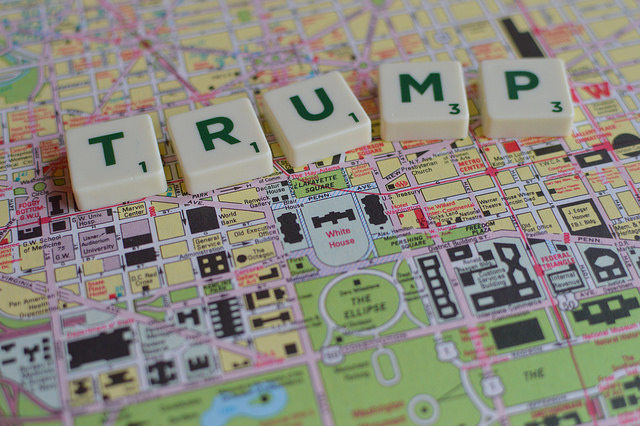 ‘Alternative Futures’ is a methodology sometimes used in strategic planning, in which the robustness of current plans is tested against various hypothetical futures. (The RAND Corporation sometimes uses this approach—they used it to test US Army force structures here.)
‘Alternative Futures’ is a methodology sometimes used in strategic planning, in which the robustness of current plans is tested against various hypothetical futures. (The RAND Corporation sometimes uses this approach—they used it to test US Army force structures here.)
The trick is to think up worlds that are both plausible and interesting. In looking at the American alliance framework in the Asia–Pacific after the US election, we’ve been gifted an almost perfect pair of alternative futures. On one hand, Hilary Clinton was chief architect (and salesperson) of the rebalance to Asia. If America’s Pacific allies could vote on the Presidency she’d be hard to beat. It remains to be seen whether the Congress will be any more tractable, so resources might continue to be an issue for the rebalance, but there’d likely be continuity of policy.
And then there’s the other hand. Donald Trump apparently thinks that Australia and the US have a special relationship, but he has scant time for alliances in general. He has no time for NATO and ‘would be fine if it broke up’. He seems to have a similar disregard for the San Francisco framework of bilateral alliances, saying that he might end the security guarantee to Japan and South Korea and suggesting that they develop nuclear weapons.
Those two worlds are far enough apart to test Australia’s strategic thinking and defence plans against. The recently released Defence White Paper heavily backed the Clinton Future, in which the US remains a committed and influential security player in the Asia–Pacific. The proposed ADF force structure is designed to make Australia a more muscular ally with high levels of interoperability with American forces across the board:
‘The Government will continue to invest in capabilities that maintain high levels of interoperability with the United States. Interoperability allows our forces to integrate when they are working together on operations and enhances the effectiveness of our combined capabilities. We will emphasise capabilities that allow us to operate more seamlessly with United States forces in maritime sub-surface and surface and air environments, as well as across the electro-magnetic spectrum.’ (5.22)
In the President Clinton world, that would be a credible approach. Indeed, by stepping up to spend more, and being more explicit about a willingness to shoulder security burdens alongside the US, Australia’s approach helps to weaken arguments in the US polity about underperforming allies not pulling their weight. Doing more makes it more likely that the US will stick around.
The same strategy probably wouldn’t work in Trumpworld—assuming that his recent rhetoric accurately reflects future actions. It might be the case that if we don’t like American policy, we’ll just need to wait a minute. And it’s possible that Congress and/or the bureaucracy will intervene to prevent any radical departures from business as usual. But a sustained hardline ‘America first’ Trump approach makes it plausible that doing more could be used as a justification for the US to do less.
But even if that wasn’t the case, it’s not clear what being the most special of the Asia–Pacific allies would do for us. ANZUS is Australia’s most direct security guarantee, but we also benefit from the American presence across the theatre, which substantially derives from its alliances with Japan and South Korea. Take those away and we have a weaker and thinner American presence in the wider region. A North Asia void of American hard power would be precarious, with potentially five nuclear powers (China, Japan, both Koreas and Russia) and no stabilising security framework.
In that scenario there’d be no requirement for ADF power projection into distant waters. If the US isn’t there, there’s no point us being there, because we’d make little difference. The question then becomes whether we’d be able to keep the US engaged in our immediate region. Ben Schreer and I wrote on The Strategist about a year ago that ‘a lot would have to go wrong’ for Australia to be the lynchpin of America’s western Pacific presence, but that scenario might now be just a political transition away.
If we could keep the US interested in sticking around here—and there’s a long tradition of that going back to the time of Mahan—current plans for an interoperable ADF would still make sense. We might be able to ease some of the more demanding requirements for platform range and endurance, which could make life easier and cheaper, especially in the future submarine project, but we’d probably still do most of the same things. And stumping up to host American forces would be even more important.
But if the US gave up on its security role in the Asia–Pacific entirely—and, as Andrew Carr pointed out recently, there hasn’t been enough thinking about such possibilities—the current ADF plan doesn’t look right. Having a small conventional force in an unstable nuclear armed world is like taking a knife to a gunfight. If Mr Trump folded his nuclear umbrella and went home, we’d need to have a whole new conversation.

